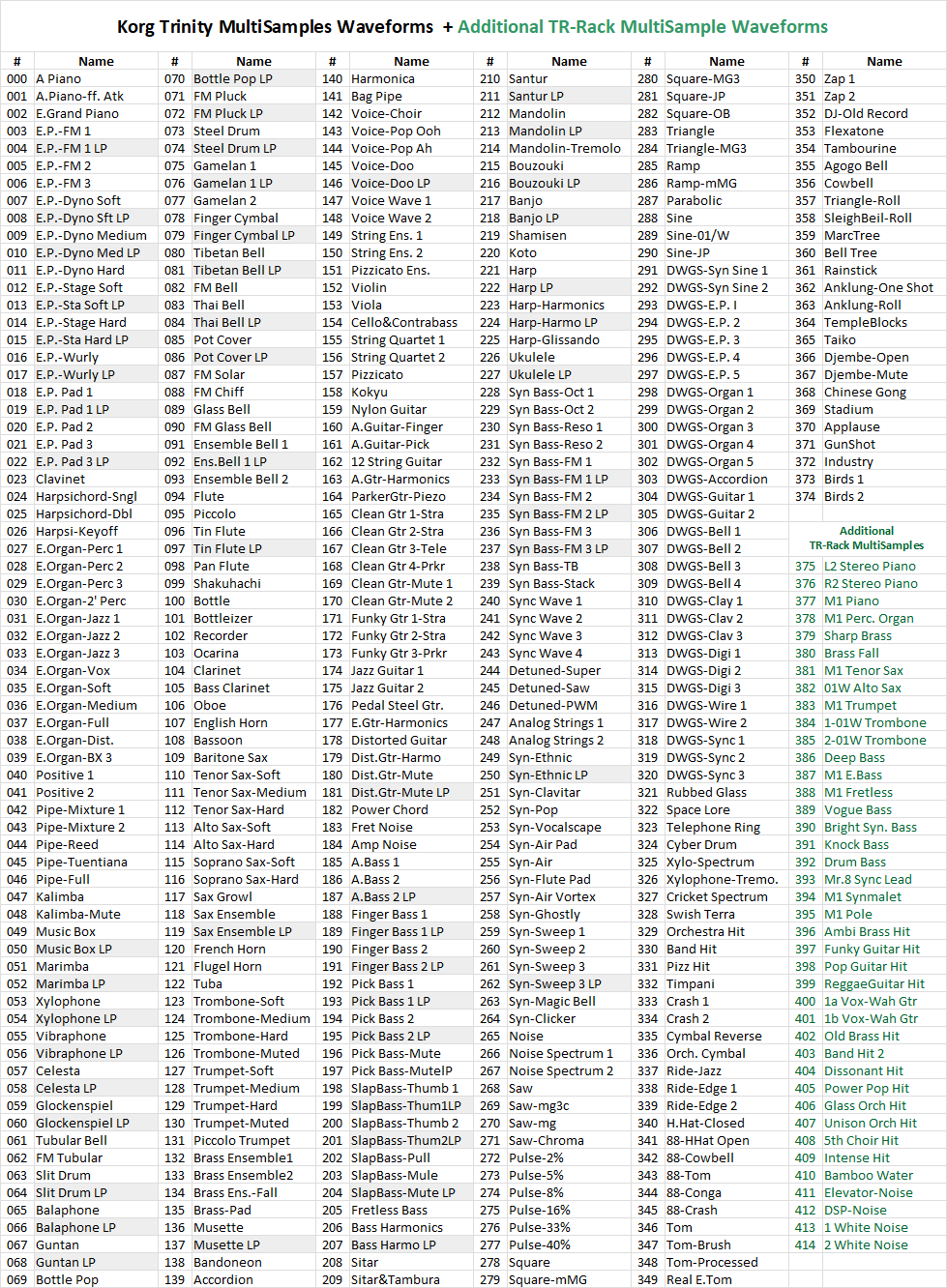There seem to be no fewer than 52 x 'LP' variants of mulitsample waveforms on the Trinity (shown highlighted in light-grey in the Trinity Multisample List at the bottom of this post) - they're all copies of existing waveforms, just seemingly low-passed.
Why so many? What are they for?
I mean, it's easy enough to set up filters on waveforms when programming a patch - the Trinity certainly has enough filters to play with (two per multisample in fact, a total of four per patch) - it wouldn't take much to add a LowPass filter to an existing waveform, so why go to the trouble of adding dedicated 'LP' versions of so many multisamples?
And more to the point, do they take up ROM space that other different multisamples could've taken? (If this is the case, it's kinda cheeky as it could've been better to use the space for new, radically different multisamples instead).
Or, are they not actually new multisamples, but employ software trickery to place a realtime filter on the existing original multisample and pass it off as a new multisample? (Which is also kinda cheeky as it would appear like there are more multisamples than there are).
Either way, it seems a bit odd.
Am I missing something?
Trinty & TR-Rack multisamples:-
